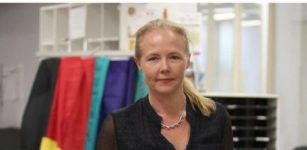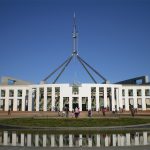Reducing Indigenous Youth Incarceration: An Interview with Just Reinvest’s Sarah Hopkins

There’s a glaring overrepresentation of young Indigenous people in the NSW prison system. While Aboriginal young people make up around 3 percent of the general population, they account for 51 percent of youths being held in juvenile detention.
At the end of March this year, there were 281 young people being held in NSW youth detention centres, and of these 145 of them were Indigenous youths, according to BOCSAR custody statistics.
On an average day in 2014, Indigenous young people – aged between 10 to 17 years old – were 28 times more likely to be in detention than non-Indigenous youths. And they were 18 times more likely to be under community-based supervision.
It costs around $650 a day to incarcerate a young person in NSW, or $237,250 a year. So going on March figures, it’s costing taxpayers over $66 million a year to detain the youth prisoner population in this state.
Investing in detention
Recidivism rates in NSW are close to 50 percent, which means around half the people behind bars return to prison within two years of release. And coupling this with the high price of detaining people in prison, you might think the state government would start to look at alternatives to incarceration.
However, the NSW government announced last year that it’s investing $3.8 billion to fund an extra 7,000 prison beds in this state. This is an almost 50 percent increase in the capacity of NSW adult correctional facilities.
Investing in brighter futures
Justice reinvestment is an initiative that diverts funding away from incarceration, and into early intervention, crime prevention and diversionary programs. It enables communities to introduce locally tailored strategies that address the underlying drivers of crime.
In 2013, Just Reinvest NSW was formed by a coalition of over 20 organisations and individuals to address the overrepresentation of Indigenous children and young people involved in the NSW criminal justice system.
The independent non-profit’s aim is to promote the justice reinvestment approach and to advocate that the NSW government shift its “policy and spending away from incarceration towards prevention, early intervention and treatment for Aboriginal children at risk.”
The Maranguka Justice Reinvestment Project
The north western NSW town of Bourke ranked highest in the state for the rate of juvenile offending in 2014. In response to the high levels of social disadvantage and rising crime in Bourke, the local community set up the Maranguka Initiative as a new Aboriginal-led way of doing community business.
The Maranguka Initiative teamed up with Just Reinvest in 2013 to create a justice reinvestment framework in Bourke. The result is the Maranguka Justice Reinvestment Project, which has been building community trust, identifying priorities and developing circuit breaker initiatives.
Sarah Hopkins has been working with the Bourke community since 2012. She’s the project director of the Maranguka Justice Reinvestment Project, as well as being the chair of Just Reinvest NSW. Ms Hopkins is also the current managing solicitor of justice projects at the Aboriginal Legal Service ACT/NSW.
Sydney Criminal Lawyers® spoke to Sarah Hopkins about the initial outcomes of the Bourke initiative and the ways in which the NSW government can reinvest funding into measures that address the causes of crime, while reducing the numbers of Indigenous young people in detention.
Firstly, Sarah, why take the justice reinvestment approach?
The question really is why is it important to start shifting resources out of prisons and the criminal justice system and into crime prevention, early intervention and diversionary programs. And the reason that you want to do that is to reduce offending and create safer communities.
It’s really about making a better investment.
So justice reinvestment is a data-based approach. Can you tell us a bit about that?
There’s three key reasons that we were so attracted to the justice reinvestment approach. The first was that it was data-driven. The second was that it was place-based and the third is that it’s a fiscally sustainable model.
In relation to the data, justice reinvestment uses data in two ways. It uses data to identify the communities that are costing the government the most in terms of incarcerating people from those communities.
And then it uses data to put a lens over those communities and identify what’s causing that offending so the community can then be equipped to make informed decisions about solutions.
Just Reinvest has a pilot initiative in Bourke: the Maranguka Justice Reinvestment Project. Why Bourke?
We were working as an advocacy organisation and talking to government, when Bourke approached us. They wanted to know if justice reinvestment as a framework could help the community to support its children and young people to stay out of trouble, and out of the criminal justice system.
You’re the project director of the Bourke initiative, which has been running since 2013. What sort of outcomes have you seen so far?
The primary outcome so far is we’ve been able to create a snapshot of what’s happening in the lives of children and young people in Bourke. And that’s formed the basis for community input and data conversation.
Those conversations, as well as the bureaucratic data, are the foundation of the strategy that the Bourke Tribal Council has developed called: Growing Our Kids Up Safe, Smart and Strong.
They’ve identified three focus areas: early childhood, 8 to 18-year-olds and the role of men. Across each of those areas, they’ve set aspirational goals, target outcomes and measures. And now in Bourke, they have three working groups that are working towards those outcomes.
There are some strategies that are currently being implemented and some that are being developed.
In terms of outcomes, we were pretty aware that there was a lot of planning and data gathering involved, so we needed to introduce some circuit breakers early on to drive home immediate change in the community, and engage the community.
So the justice circuit breakers were, firstly, bail protocols.
Bourke had the highest breach of bail rate in the state. And we’ve been able to develop protocols with the police. So rather than initiate action on a breach – particularly when it comes to children and young people – that warnings be given, that the community hub be contacted to see if that person can be provided with support and introducing some reasonableness around curfew checks during the night.
The second circuit breaker was a warrant clinic. At the time that we were starting to consult with the community, warrants were a big issue, with the local court issuing warrants and people going underground, who had a warrant out for their arrest. They were disengaging with essential services, and family and supports. And often offending more.
So we set up a warrant clinic. The Aboriginal Legal Service would apply to the magistrate to have that warrant lie in office. And the person would then meet with the support team, plan and go back to the court.
The third circuit breaker was the driver licensing clinic. Driver licensing offences were a big problem in Bourke and this now operates to provide free driving lessons for people. And that’s had immediate results, in terms of people being able to obtain their licence, obtain jobs and bringing about a reduction in driver licensing offences.
I think it’s important to stress that this is really early days, in terms of implementation.
Justice Reinvestment is about diverting funds away from incarceration and into early intervention, crime prevention and diversionary programs. So how do you actually go about practically achieving this aim?
There’s two ways that the government can create savings to reinvest.
The first is looking at legislative and policy measures that will reduce the size of the NSW prison population. So they’re things like reducing the number of sentences of six months or less, ensuring the availability and expanding the scope of non-custodial sentencing options and looking at changes to the parole regime.
We’re proposing a number of these changes and consulting with the government in relation to the recent criminal justice reform package. Because our argument will be if we can put some downward pressure on the prison population through legislative and policy measures, then let’s find a fiscal mechanism to ensure that a portion of those savings are then reinvested back into the community.
The second way you can create savings is what we’re doing in Bourke, which is locally-driven community-based initiatives.
And so, we have KPMG working with us on doing some economic analysis and developing a case for government about the saving that can be realised as a result of initiatives like Bourke. And the sort of mechanisms the government can employ to reinvest those savings.
There’s an overrepresentation of Indigenous young people in NSW correctional facilities. In your opinion, what sort of impact do current policing methods have on this situation?
It’s different from place to place. In certain areas, there’s big issues around over-policing, and it’s really important to work with different local area commands around practices and ways that they really can support the communities in making sure, particularly Aboriginal young people, don’t end up in prison for minor offences.
In Bourke, for instance, the police have been at the table as a very important player, and are working towards the community goals.
I think they can be a model for other local area commands, in terms of the roles that the police can play. Because we can see historically that over-policing has had such a deleterious impact.
The justice reinvestment approach was initially developed in the United States. What sort of success have these programs had in the US?
When you look now at the US prison population across the country it’s coming down.
It’s been an infamously enormous prison population and they still have an ongoing problem with mass incarceration.
But in some of the key states like California imprisonment is down by 20 percent. It’s starting to head in the right direction and that’s through various justice reinvestment frameworks across the United States.
And lastly, the Bourke initiative is being run with the view to rolling out more justice reinvestment initiatives around the state.
What’s the likelihood of this happening at the moment?
We’re very much focused on Bourke right now.
There are a number of other communities that are interested in the approach. There’s some support, particularly from Labor. It’s actually Labor policy to introduce another three justice reinvestment trial sites.
In the business case that KPMG are preparing, we’ll look at issues of scalability, because there are certainly core components that could be part of a model that could be used in other communities.
The answer is, I think there’s real promise for justice reinvestment, as a framework, to be rolled out across not only NSW, but Australia. The ACT government has actually got a justice reinvestment initiative that’s in its early stages.
Thanks very much for taking the time out to have this chat with us today, Sarah. And continued success with the outcomes you’re having with the Maranguka Justice Reinvestment Project.
It’s a pleasure.
Image Credit: Jason McCormack







